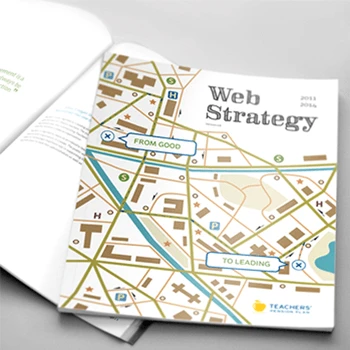What exactly is your approach to front-end web development?
Our front-end web development focuses on high-quality code that performs well in search, across devices, and over the long term. We work on consumer websites, government portals, e-commerce sites, microsites, and static web pages, ensuring each site delivers excellent user responses through sophisticated coding practices and experience-centered implementation.
Tip: Evaluate development approaches based on long-term sustainability and user experience quality rather than just initial delivery speed.
How does web development connect to your Experience Thinking framework?
Through our Experience Thinking framework, web development serves as the implementation layer that brings together brand experience, content experience, product experience, and service experience into functional websites. Development translates strategic design decisions into code that maintains the intended user experience across all touchpoints and interactions.
Tip: Ensure your development approach preserves the strategic experience decisions made during design rather than optimizing only for technical efficiency.
What types of websites and projects do you typically develop?
We develop sophisticated product websites, enterprise portals, engagement platforms, and static web pages. Each project type requires different technical approaches while maintaining our core focus on user experience quality, cross-device compatibility, and long-term performance. Our development adapts to project complexity while preserving experience integrity.
Tip: Choose development partners based on their experience with your specific project type and complexity level rather than general web development capabilities.
Why do you focus specifically on front-end development rather than full-stack?
Front-end development is where user experience directly translates into code, making it critical for maintaining design intent and experience quality. We focus on presentation layer implementation, visual framework creation, and user interaction coding that preserves the strategic experience decisions made during research and design phases.
Tip: Prioritize front-end development quality for user-facing projects since this layer most directly affects user experience and business outcomes.
What's your philosophy on maintaining design quality through development?
Experience design quality is about minding the details, and having a brilliant design slightly reinterpreted in code reduces quality in most cases. We maintain design intent through detailed specifications, ongoing design support, and frequent quality reviews that ensure the final implementation matches the intended user experience.
Tip: Plan for ongoing design review and quality assurance throughout development rather than assuming design intent will be preserved automatically.
How do you approach responsive design and cross-device compatibility?
Cross-device compatibility requires understanding how user experience changes across different contexts, screen sizes, and interaction methods. We develop responsive solutions that maintain experience quality across devices while adapting interface elements appropriately for different usage contexts and technical constraints.
Tip: Test responsive designs with actual devices and real usage contexts rather than just browser resizing to ensure genuine cross-device experience quality.
What role does performance optimization play in your development approach?
Performance directly affects user experience quality and search engine effectiveness, making it essential for long-term website success. We optimize code for speed, efficiency, and scalability while maintaining design quality and functionality. Performance optimization considers both technical metrics and user experience impact.
Tip: Establish performance budgets that balance user experience quality with technical optimization rather than optimizing speed at the expense of experience richness.
How do you ensure user experience research informs development decisions?
Development specifications include annotated wireframes that show clearly how content and functions work from a user's perspective, ensuring research insights translate into functional code. We maintain ongoing collaboration between development and design to preserve user-centered decisions throughout the implementation process.
Tip: Create development specifications that include user research rationale alongside technical requirements to maintain experience focus during coding.
What's your approach to translating design specifications into code?
Design specifications combine annotated wireframes and coded visual patterns that capture the visual framework of the product experience. These patterns include reusable components for search, selection, navigation, and other user interactions that maintain consistency while enabling efficient development and future maintenance.
Tip: Invest in detailed design specifications that bridge design intent and technical implementation rather than expecting developers to interpret design decisions independently.
How do you maintain brand consistency through development implementation?
Brand consistency requires translating brand strategy into specific code patterns, interaction behaviors, and visual implementation that express brand personality consistently across all user touchpoints. Through our Experience Thinking approach, we ensure brand experience connects seamlessly with content, product, and service experiences in the final implementation.
Tip: Create brand implementation guidelines that specify how brand should be expressed through code rather than just visual design elements.
How do you handle content architecture requirements in development?
Content architecture drives how information is structured, accessed, and manipulated through code, requiring development that supports user mental models and task flows. We implement content hierarchies, navigation patterns, and search functionality that serve user information-seeking behaviors rather than just technical data organization.
Tip: Validate content architecture implementation with actual user tasks rather than just technical functionality to ensure it serves real user information needs.
What's your approach to service experience integration through development?
Service experience integration requires coding that connects multiple touchpoints, supports user journeys across different interaction points, and enables smooth transitions between digital and human service elements. Development supports the complete customer-to-user-to-client lifecycle through technical implementation.
Tip: Design development architecture that can support service experience evolution rather than just current touchpoint requirements.
How do you implement accessibility considerations during development?
Accessibility implementation ensures all users can successfully complete their tasks regardless of abilities or assistive technologies. We build accessibility considerations into code architecture, interaction patterns, and content presentation that serve diverse user needs while maintaining experience quality for all users.
Tip: Include accessibility testing with actual assistive technology users during development rather than just automated compliance checking.
How does foresight design influence your development approach?
Foresight design helps anticipate future user needs, technology changes, and business requirements that will affect website evolution. We develop code architectures that can adapt to emerging interaction patterns, new content types, and evolving user expectations while maintaining current functionality and experience quality.
Tip: Build development frameworks that enable future enhancement rather than optimizing only for current requirements to avoid costly rebuilds.
What coding standards and practices do you follow?
We follow coding standards that prioritize maintainability, performance, and experience quality including semantic HTML, efficient CSS, and progressive enhancement JavaScript. Our coding practices emphasize clean, documented code that other developers can understand and maintain while preserving user experience integrity over time.
Tip: Establish coding standards that prioritize long-term maintainability rather than just current project delivery speed.
How do you approach progressive enhancement in development?
Progressive enhancement ensures websites function effectively across different browsers, devices, and technical capabilities while providing enhanced experiences where possible. We build core functionality first, then layer on enhancements that improve experience quality without breaking basic functionality for any users.
Tip: Test progressive enhancement with actual low-capability devices and slow connections rather than just simulating constraints in modern browsers.
What's your approach to CSS architecture and maintainability?
CSS architecture requires systematic organization that supports design consistency, development efficiency, and long-term maintenance. We create modular CSS systems that reflect design patterns while enabling scalable styling that can evolve with design changes without requiring complete rewrites.
Tip: Invest in CSS architecture that reflects your design system structure rather than just organizing styles by page or component type.
How do you handle JavaScript implementation for user interactions?
JavaScript implementation focuses on enhancing user experience through smooth interactions, dynamic content updates, and responsive interface behaviors while maintaining accessibility and performance. We write JavaScript that degrades gracefully and provides meaningful enhancements to user task completion.
Tip: Test JavaScript functionality with users who have disabilities and older devices to ensure enhancements don't create barriers for some users.
What's your approach to SEO implementation during development?
SEO implementation requires semantic HTML structure, appropriate meta information, performance optimization, and content accessibility that serves both users and search engines effectively. We build SEO considerations into development architecture rather than adding them as an afterthought.
Tip: Focus SEO implementation on user task success and content quality rather than just technical optimization metrics.
How do you ensure cross-browser compatibility?
Cross-browser compatibility requires systematic testing and progressive enhancement approaches that ensure consistent user experience across different browser capabilities. We test with actual browsers and devices throughout development rather than just at the end of the project.
Tip: Establish browser compatibility requirements based on your actual user analytics rather than industry assumptions about browser usage.
How does artificial intelligence impact your development practices?
AI enhances development efficiency through code generation, automated testing, and pattern recognition while requiring human oversight for user experience decisions and quality assurance. We use AI to accelerate routine development tasks while preserving human judgment for experience strategy and complex implementation decisions that affect user success.
Tip: Use AI development tools to handle routine coding tasks while maintaining human control over user experience implementation and strategic technical decisions.
How do you collaborate with design teams during development?
We provide ongoing detailed design support throughout development, including additional elements like icons, customized design patterns, and partial page layouts where needed. Frequent design check-ins and reviews maintain design quality and support the development process in both waterfall and agile environments.
Tip: Schedule regular design review sessions during development rather than waiting for milestone deliveries to address design quality issues.
What's your approach to agile development methodologies?
Agile development requires balancing iterative delivery with experience quality maintenance through consistent design review, user feedback integration, and quality assurance processes. We adapt agile practices to preserve user experience focus while delivering functional increments that build toward complete experience implementation.
Tip: Include user experience validation in agile sprint criteria rather than just functional completion to maintain experience quality.
How do you handle project communication and stakeholder updates?
Project communication includes regular progress updates, technical milestone reporting, and collaborative problem-solving that keeps stakeholders informed while maintaining development momentum. We provide transparency about technical challenges and timeline impacts while protecting development team focus on quality delivery.
Tip: Establish communication rhythms that provide stakeholder visibility without interrupting development team productivity and focus.
What's your process for handling development changes and iterations?
Change management requires balancing user feedback incorporation with project scope and timeline management. We evaluate changes based on user experience impact and technical feasibility while maintaining clear communication about scope implications and timeline effects.
Tip: Establish change evaluation criteria that prioritize user experience impact alongside technical and timeline considerations.
How do you integrate with client technical teams and existing systems?
Technical integration requires understanding existing system architectures, development workflows, and team capabilities while introducing experience-focused development practices. We work collaboratively with client technical teams to enhance their capabilities while delivering experience quality improvements.
Tip: Plan technical integration based on existing team capabilities and system constraints rather than assuming ideal technical environments.
What documentation and knowledge transfer do you provide?
Documentation includes code comments, architectural explanations, maintenance guidelines, and development process documentation that enables ongoing website management. Knowledge transfer ensures client teams can maintain and evolve the website while preserving experience quality and technical integrity.
Tip: Focus documentation on decision rationale and maintenance procedures rather than just technical specifications to enable long-term success.
What testing approaches do you use during development?
Testing includes user experience testing during the build phase, cross-browser compatibility testing, performance validation, and accessibility verification. We test with actual users carrying out real tasks to ensure development implementation supports user success rather than just technical functionality.
Tip: Include user task testing during development phases rather than only after completion to enable design adjustments before launch.
How do you ensure code quality throughout development?
Code quality maintenance includes peer review, automated testing, performance monitoring, and adherence to established coding standards. Quality assurance processes prevent technical debt accumulation while ensuring code remains maintainable and performs effectively over time.
Tip: Establish code quality gates that prevent low-quality code from reaching production rather than trying to fix quality issues after deployment.
What's your approach to performance testing and optimization?
Performance testing evaluates both technical metrics and user experience impact across different devices, network conditions, and usage contexts. We optimize for real-world performance that serves user task completion rather than just laboratory benchmark improvements.
Tip: Test performance with realistic content loads and user interaction patterns rather than just empty templates to understand actual user experience.
How do you validate design implementation accuracy?
Design validation includes pixel-perfect comparison, interaction behavior verification, and user experience consistency checking across different contexts and devices. We ensure final implementation matches design intent while making necessary adaptations for technical constraints.
Tip: Create design validation checklists that include both visual accuracy and interaction behavior rather than just static appearance matching.
What's your process for debugging and issue resolution?
Issue resolution follows systematic debugging approaches that identify root causes rather than just symptoms, prioritize fixes based on user impact, and implement solutions that prevent similar issues. We document issues and solutions to improve future development quality.
Tip: Prioritize bug fixes based on user task impact rather than just technical severity to focus on issues that affect real user success.
How do you ensure security considerations are addressed?
Security implementation includes secure coding practices, vulnerability prevention, data protection measures, and regular security auditing that protects both user information and website integrity. Security considerations are built into development processes rather than added afterward.
Tip: Include security review in development workflows rather than treating security as a separate audit after development completion.
What's your approach to launch preparation and final testing?
Launch preparation includes final user testing, performance verification, cross-browser validation, and deployment planning that ensures smooth transition to production. We test complete user scenarios in production-like environments to identify potential issues before public launch.
Tip: Test complete user journeys in staging environments rather than just individual features to identify integration issues before launch.
How do you approach design system development and implementation?
Design system development creates reusable components and patterns that maintain experience consistency while enabling efficient development and future maintenance. We build design systems that encode strategic experience decisions in code while providing flexibility for future evolution and enhancement.
Tip: Develop design systems that reflect your experience strategy rather than just organizing existing interface elements for consistency.
What's your approach to scalable architecture planning?
Scalable architecture anticipates future content growth, user traffic increases, and functionality expansion while maintaining performance and experience quality. We design technical foundations that can evolve with business needs without requiring complete reconstruction.
Tip: Plan architecture scalability based on realistic growth projections rather than unlimited scale requirements that create unnecessary complexity.
How do you handle content management system integration?
CMS integration requires balancing content editor usability with front-end experience quality, ensuring content management workflows support experience maintenance while enabling efficient content operations. We customize CMS implementations to serve both editorial and user experience needs effectively.
Tip: Evaluate CMS solutions based on content editor workflow efficiency and front-end experience flexibility rather than just feature lists.
What's your approach to modular development and component architecture?
Modular development creates reusable code components that reflect design patterns while enabling efficient maintenance and consistent user experience. Component architecture supports design system implementation while providing technical flexibility for different content and functionality requirements.
Tip: Design component architecture that balances reusability with customization needs rather than creating overly rigid or overly flexible systems.
How do you plan for website maintenance and long-term evolution?
Maintenance planning includes code organization, documentation, update procedures, and architectural flexibility that enable ongoing website evolution while preserving experience quality. We design technical foundations that support change while maintaining stability and performance.
Tip: Plan maintenance workflows and technical debt management from the beginning rather than addressing these concerns only when problems arise.
What's your approach to third-party integration and API development?
Third-party integration requires balancing external service capabilities with user experience quality, ensuring integrations enhance rather than compromise user task completion. We design integration architectures that maintain experience consistency while leveraging external functionality effectively.
Tip: Evaluate third-party integrations based on user experience impact rather than just functional capabilities to avoid degrading overall experience quality.
How do you measure development project success?
Success measurement includes user task completion improvements, performance metrics, technical quality indicators, and business goal achievement that demonstrate development value. We establish baseline measurements and track improvements that connect technical implementation to experience and business outcomes.
Tip: Create success metrics that connect technical implementation quality to user experience and business results rather than just measuring development process efficiency.
What support do you provide after website launch?
Post-launch support includes performance monitoring, issue resolution, user feedback integration, and ongoing optimization that maintains website effectiveness over time. We provide technical support while building client team capabilities for independent website management and evolution.
Tip: Plan post-launch support based on your team's technical capabilities and long-term maintenance needs rather than assuming complete independence immediately.
How do you handle website performance monitoring and optimization?
Performance monitoring tracks both technical metrics and user experience indicators across different contexts and usage patterns. We optimize performance based on real user data and task completion impact rather than just laboratory testing results.
Tip: Monitor performance with real user metrics and task completion data rather than just synthetic testing to understand actual user experience impact.
What's your approach to iterative improvement and website evolution?
Iterative improvement uses user feedback, analytics insights, and business changes to guide website evolution while maintaining experience quality and technical integrity. We plan enhancement cycles that build on existing technical foundations rather than requiring complete redesigns.
Tip: Plan website evolution cycles that balance user feedback integration with strategic experience objectives rather than just responding to immediate requests.
How do you ensure knowledge transfer for ongoing website management?
Knowledge transfer includes technical training, documentation, maintenance procedures, and capability building that enables client teams to manage and evolve websites independently. We focus on strategic understanding alongside technical skills to maintain experience quality over time.
Tip: Focus knowledge transfer on decision-making frameworks rather than just technical procedures to enable appropriate website evolution choices.
What long-term value does professional web development provide?
Professional development creates technical foundations that support business growth, user experience evolution, and market changes while reducing long-term maintenance costs and technical debt. Investment in quality development provides sustainable competitive advantages through superior user experiences.
Tip: Evaluate development investment based on long-term business value and competitive advantage rather than just initial project costs.
What trends in web development should we prepare for?
Current trends include AI-enhanced development tools, progressive web applications, voice interface integration, privacy-focused architectures, and performance-first development approaches. Through foresight design principles, we help organizations prepare for emerging technologies while maintaining current website effectiveness.
Tip: Build development foundations that can adapt to emerging technologies rather than trying to implement every new trend immediately.












